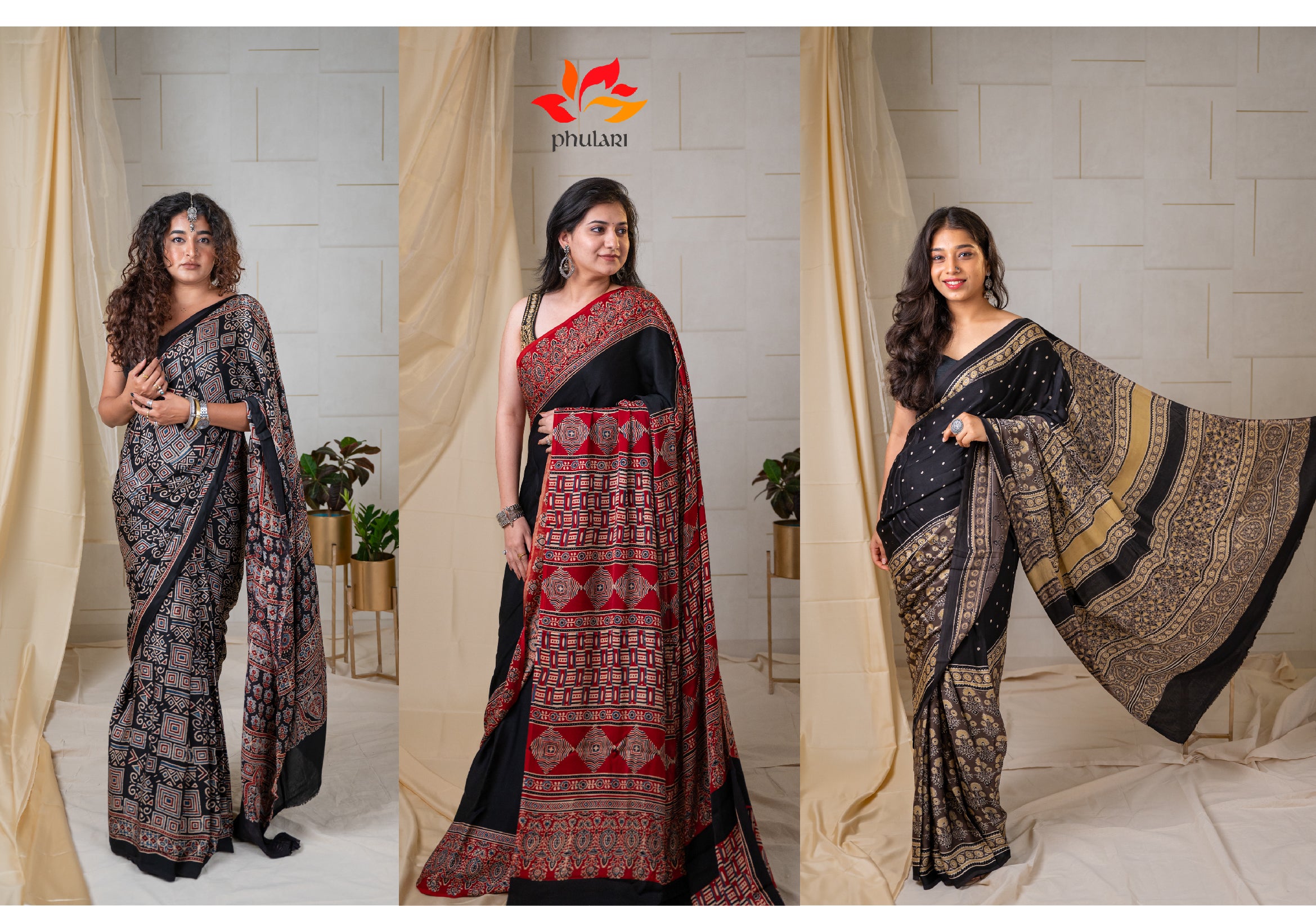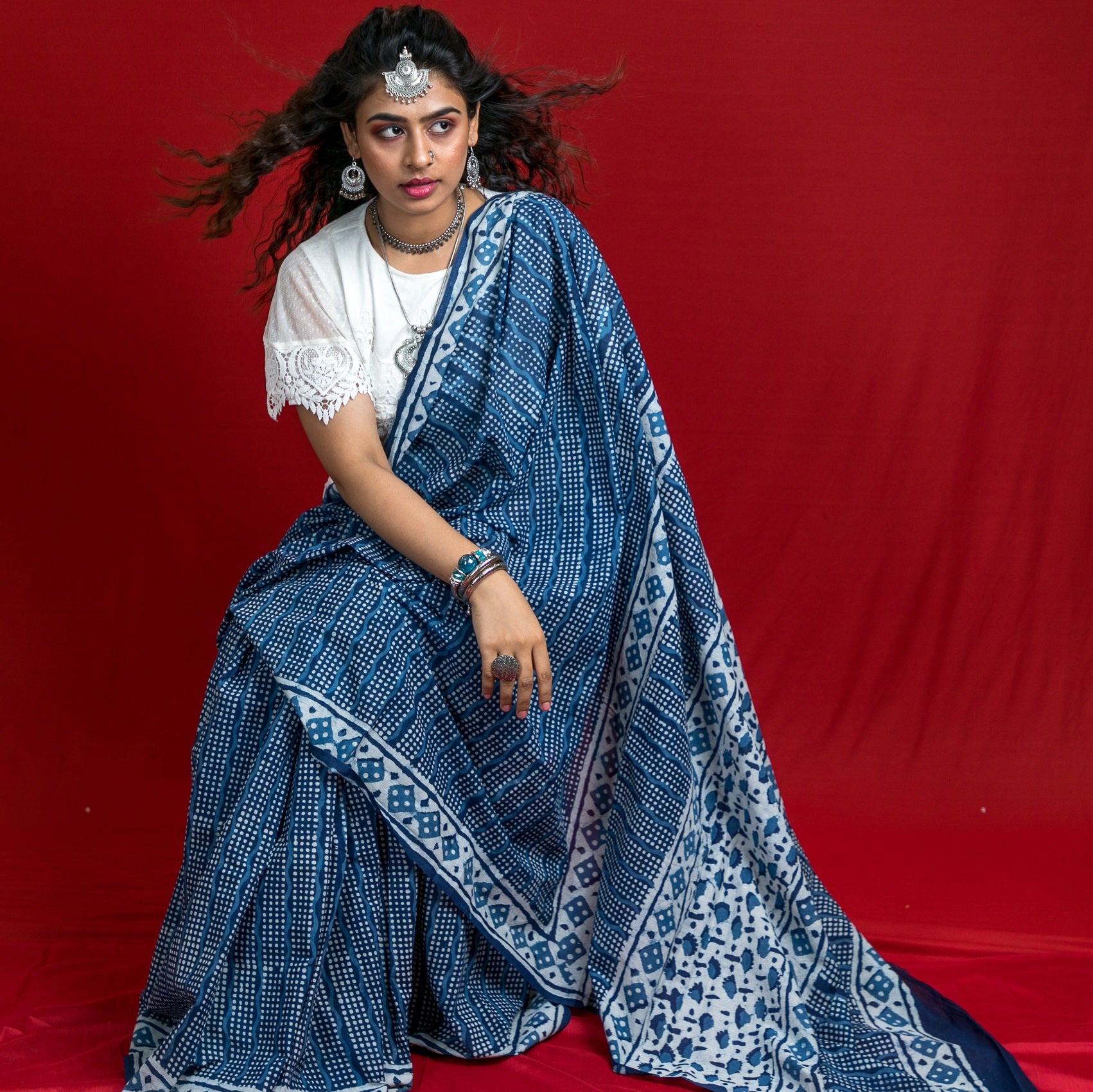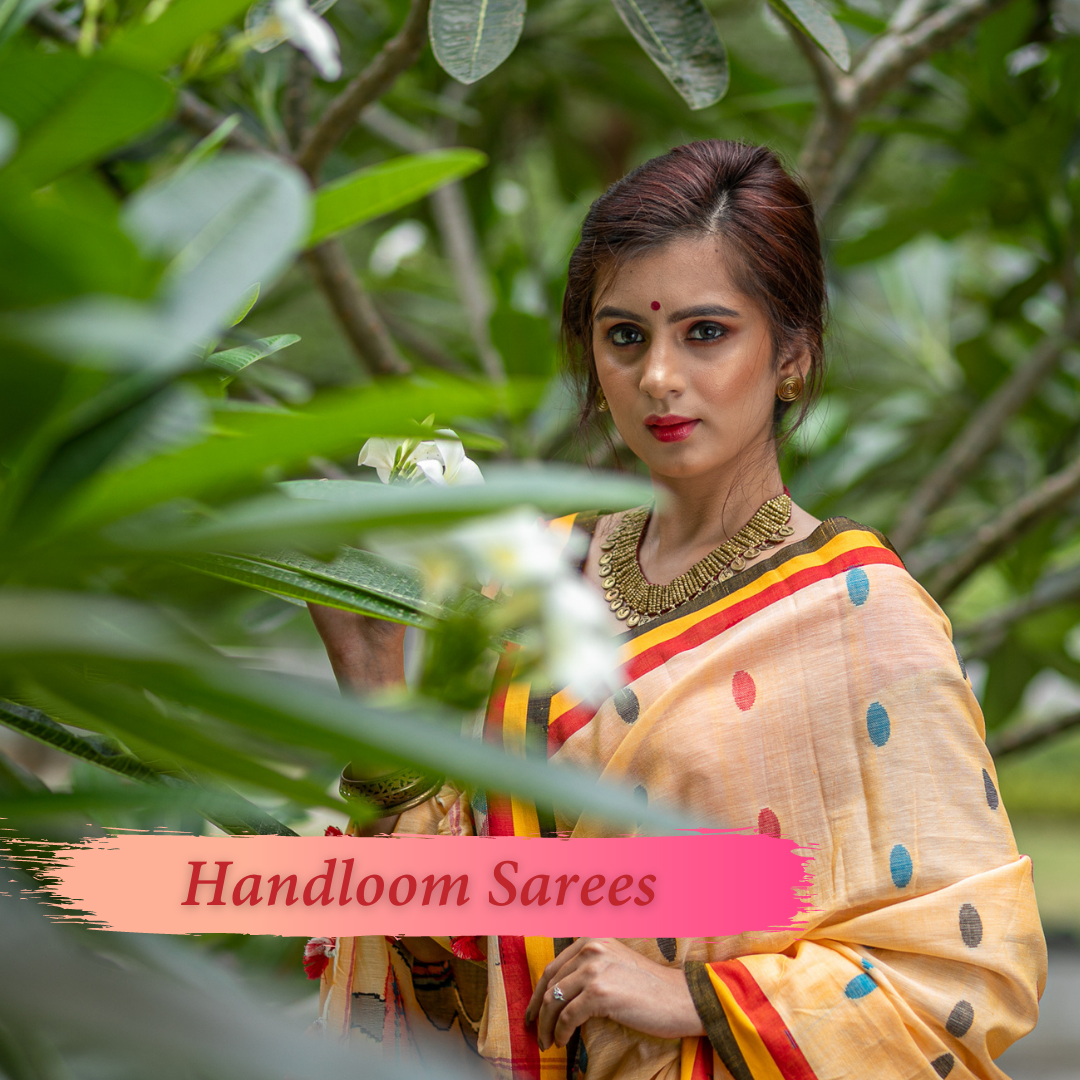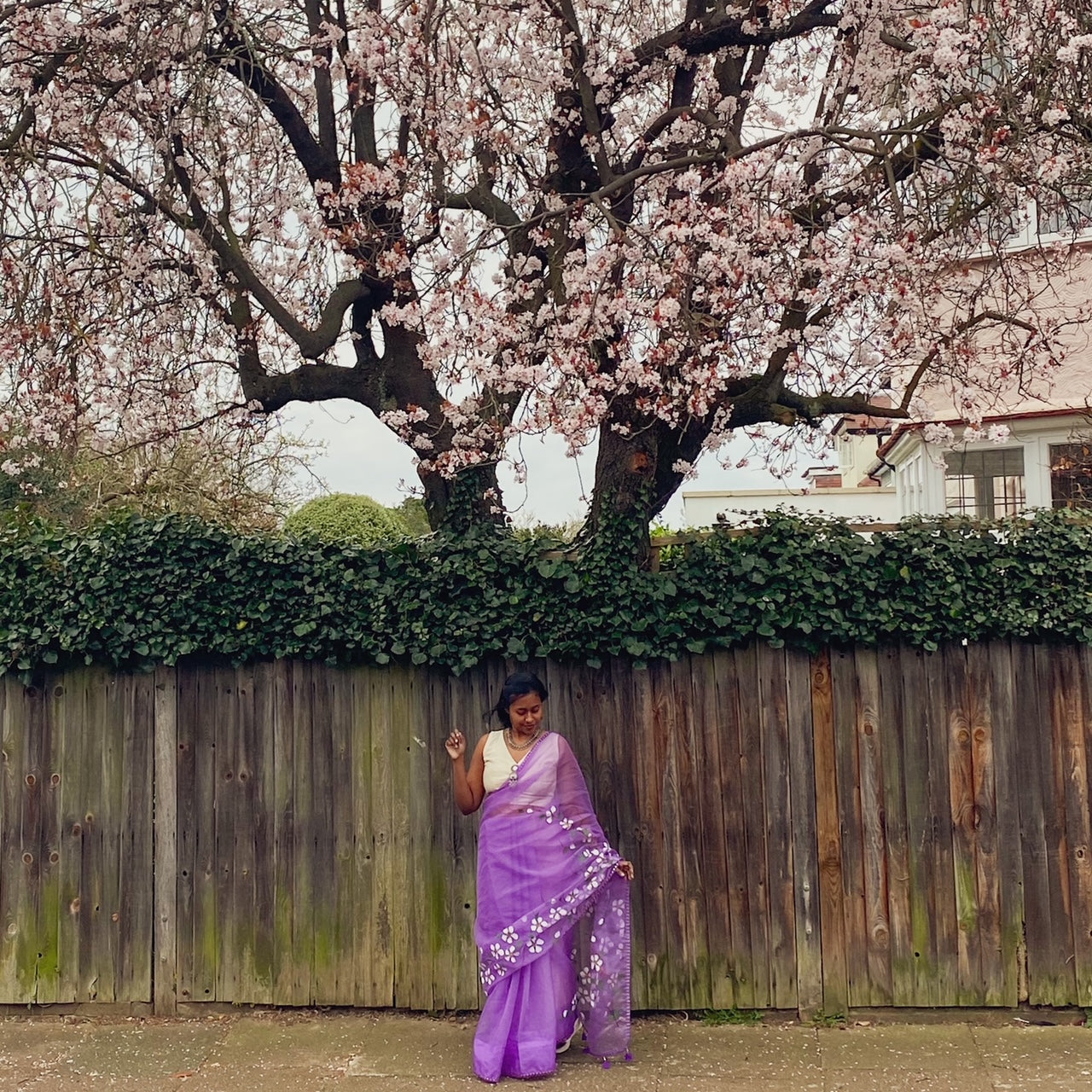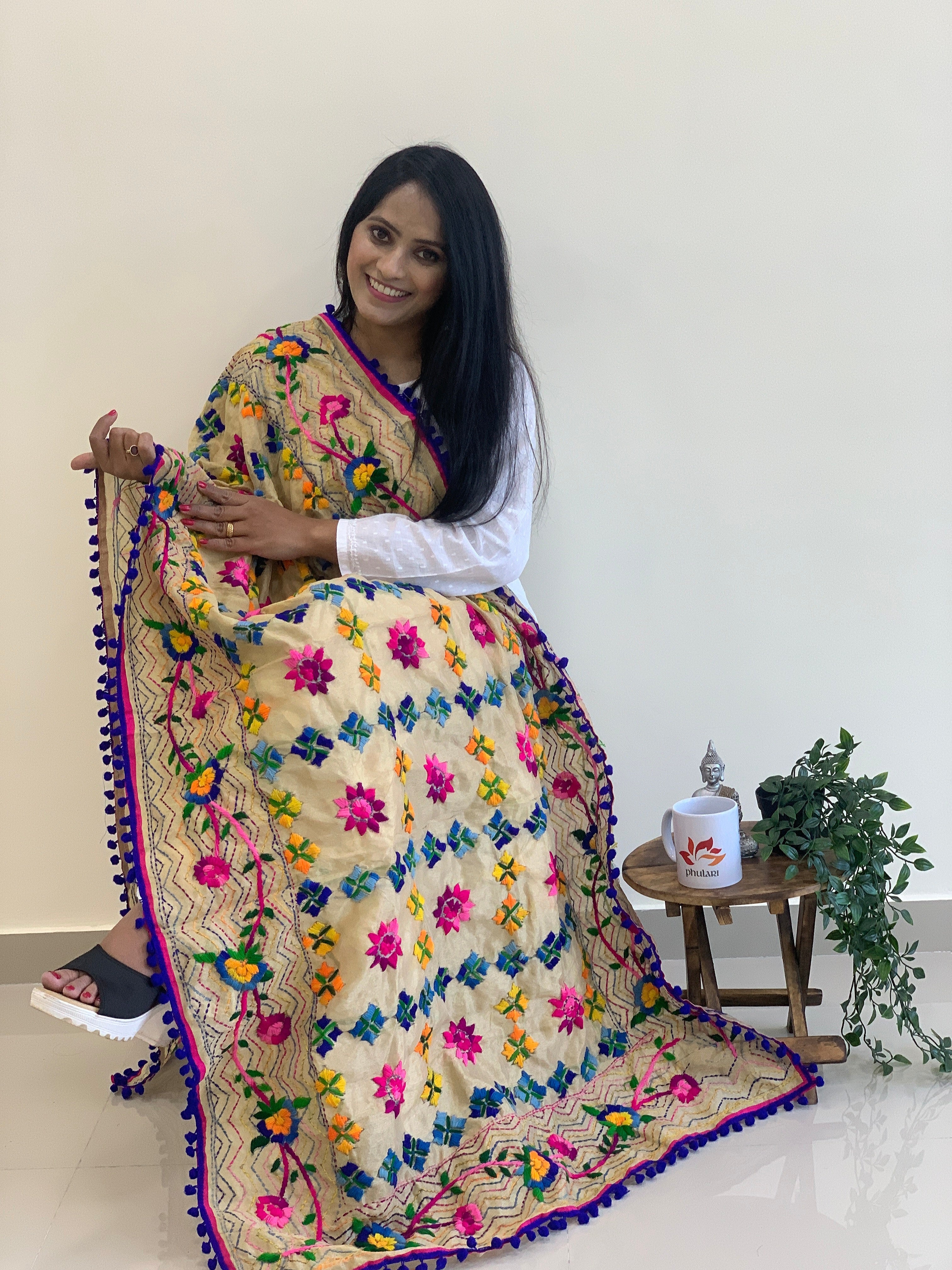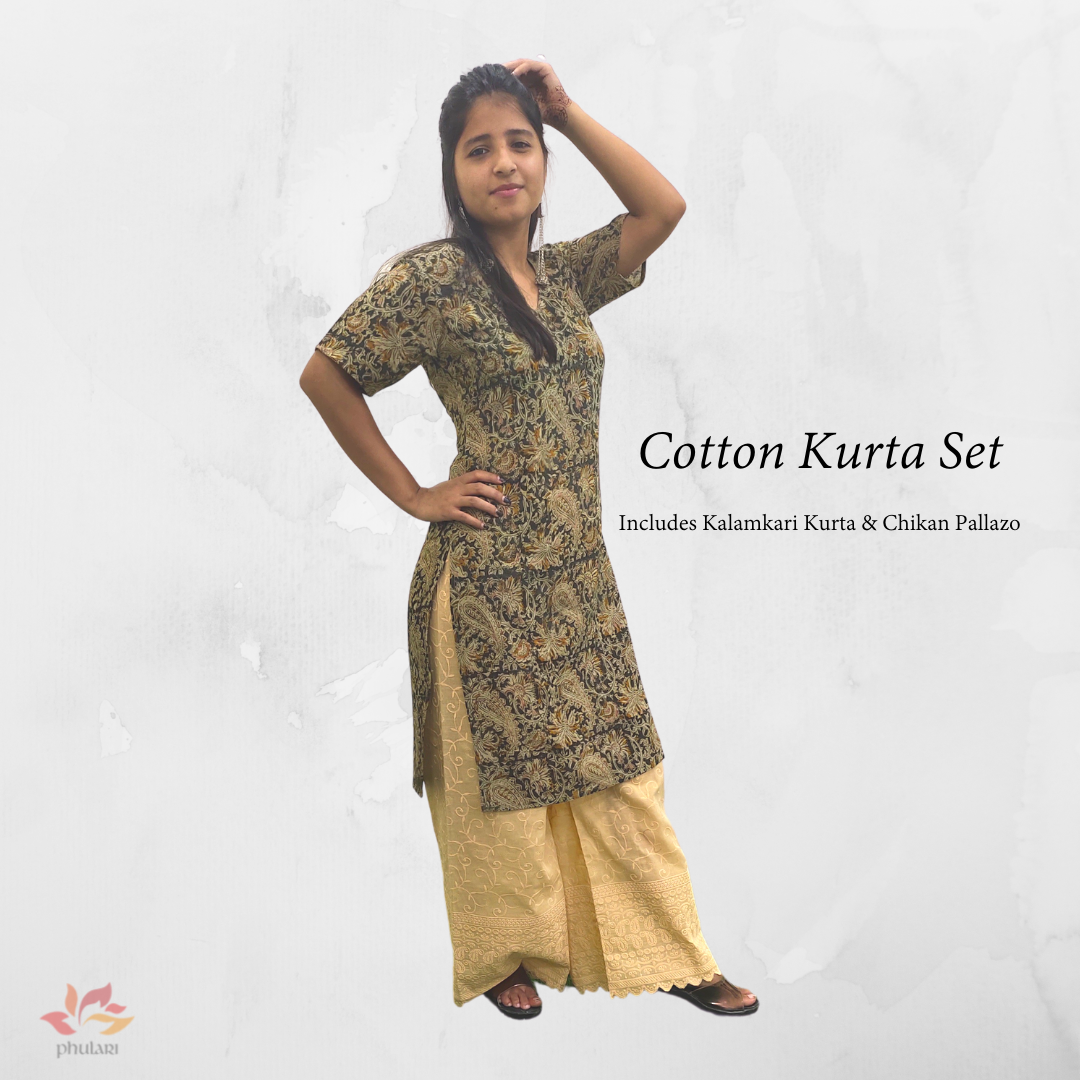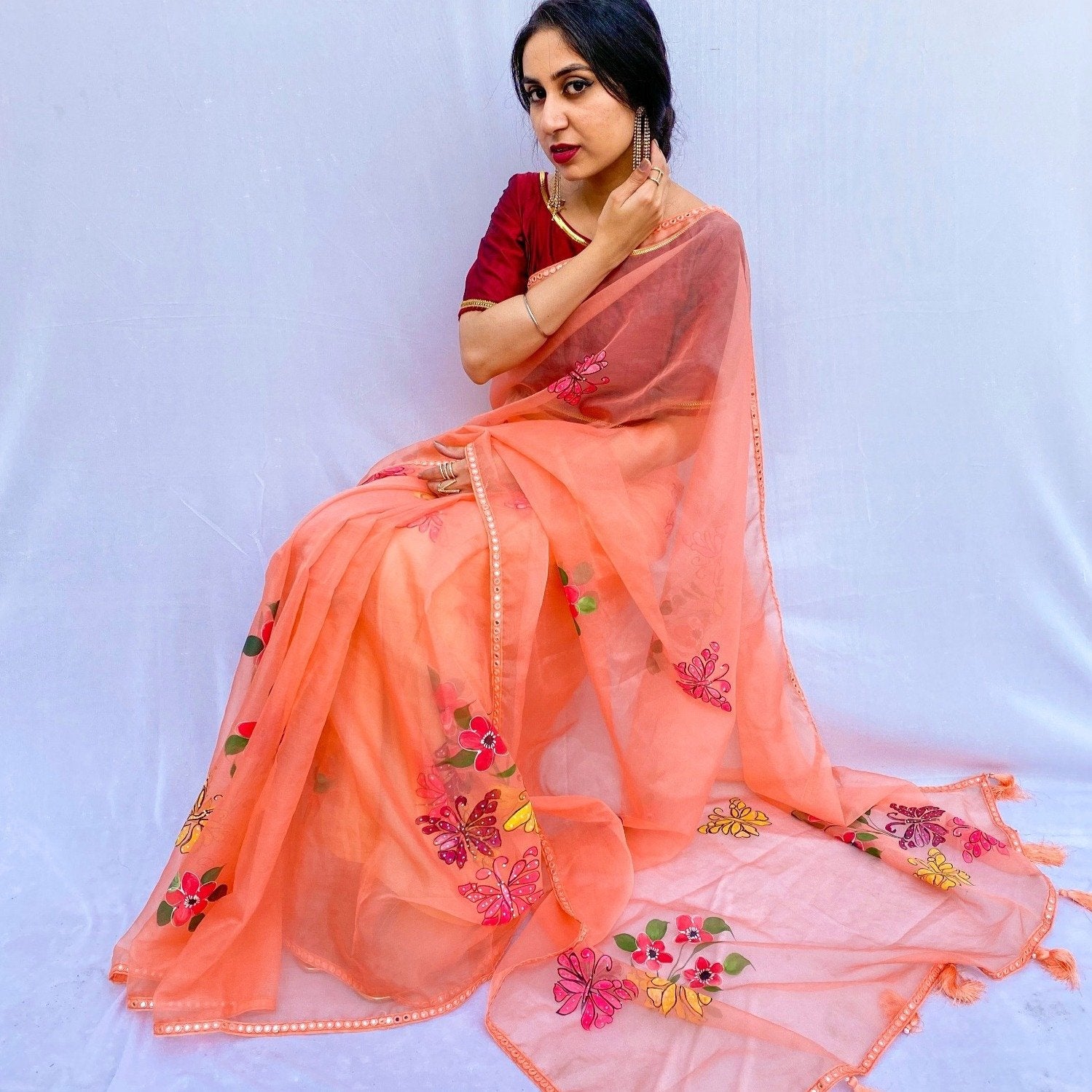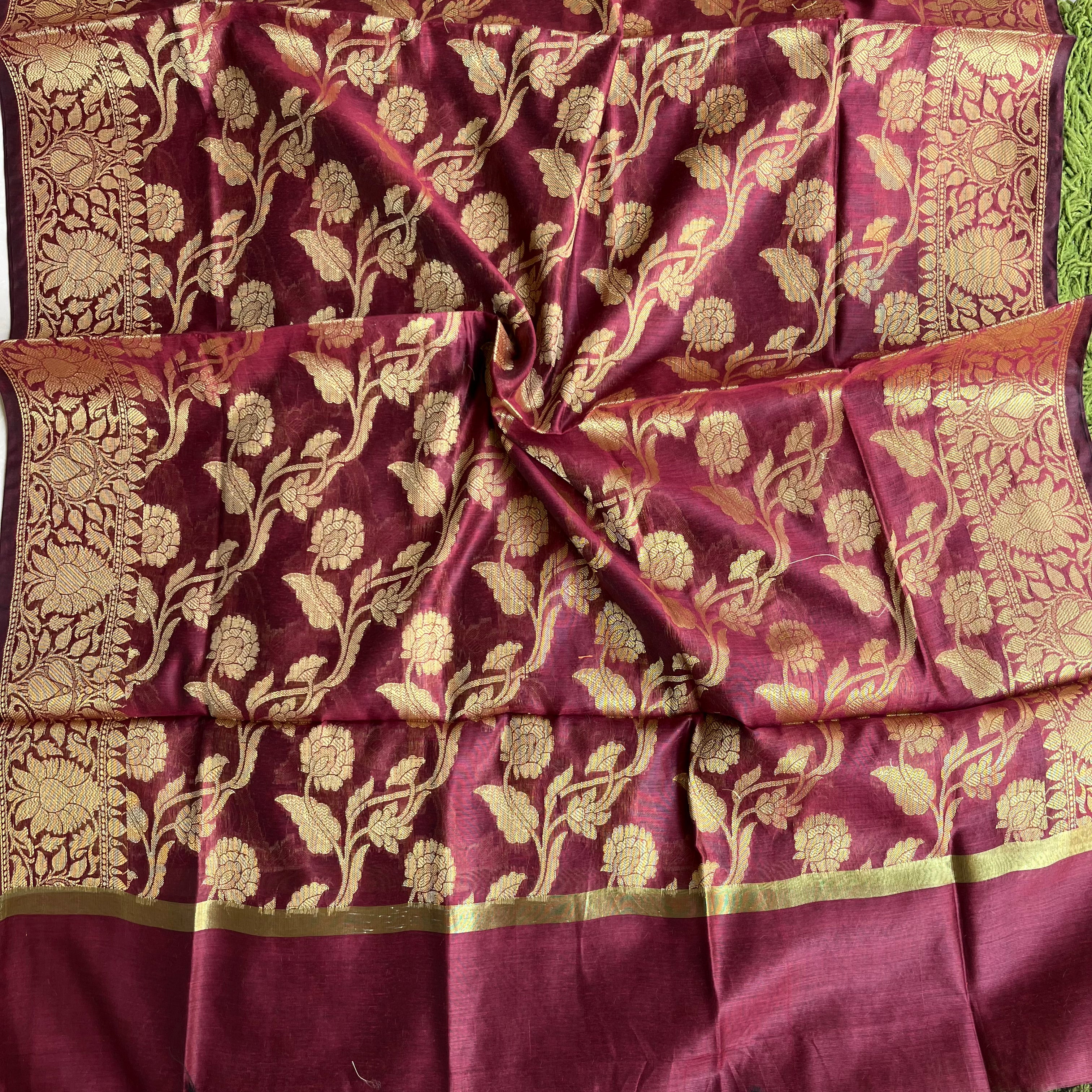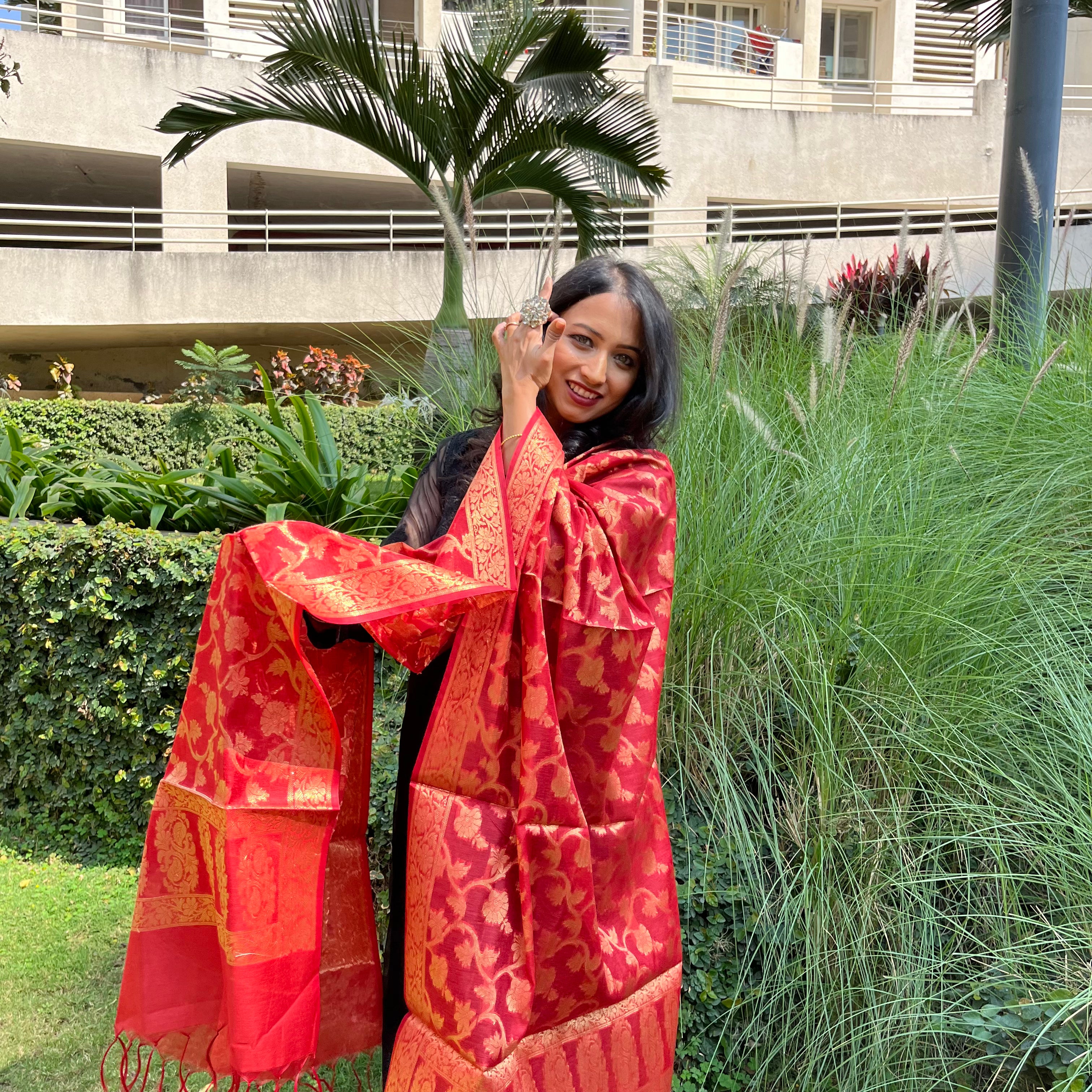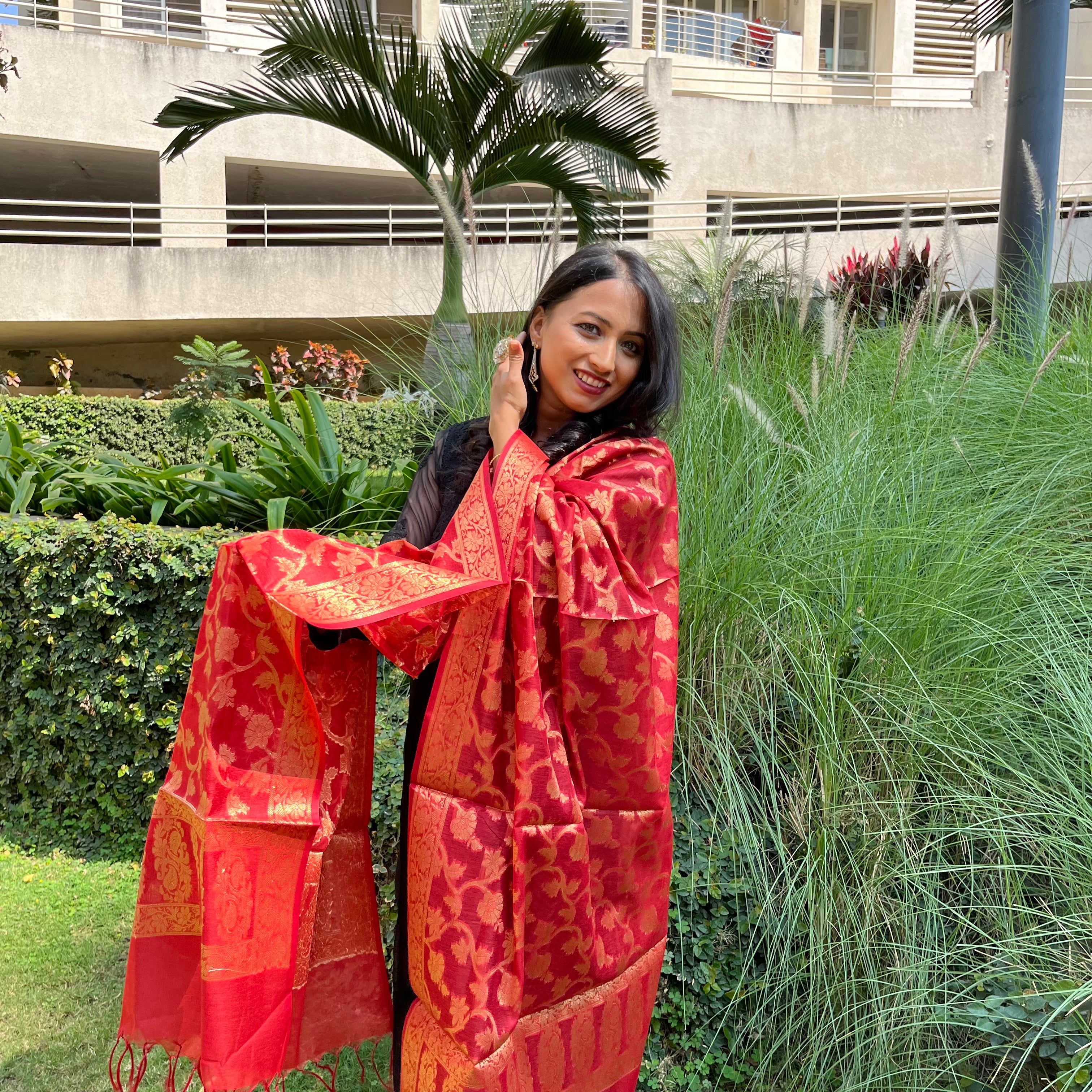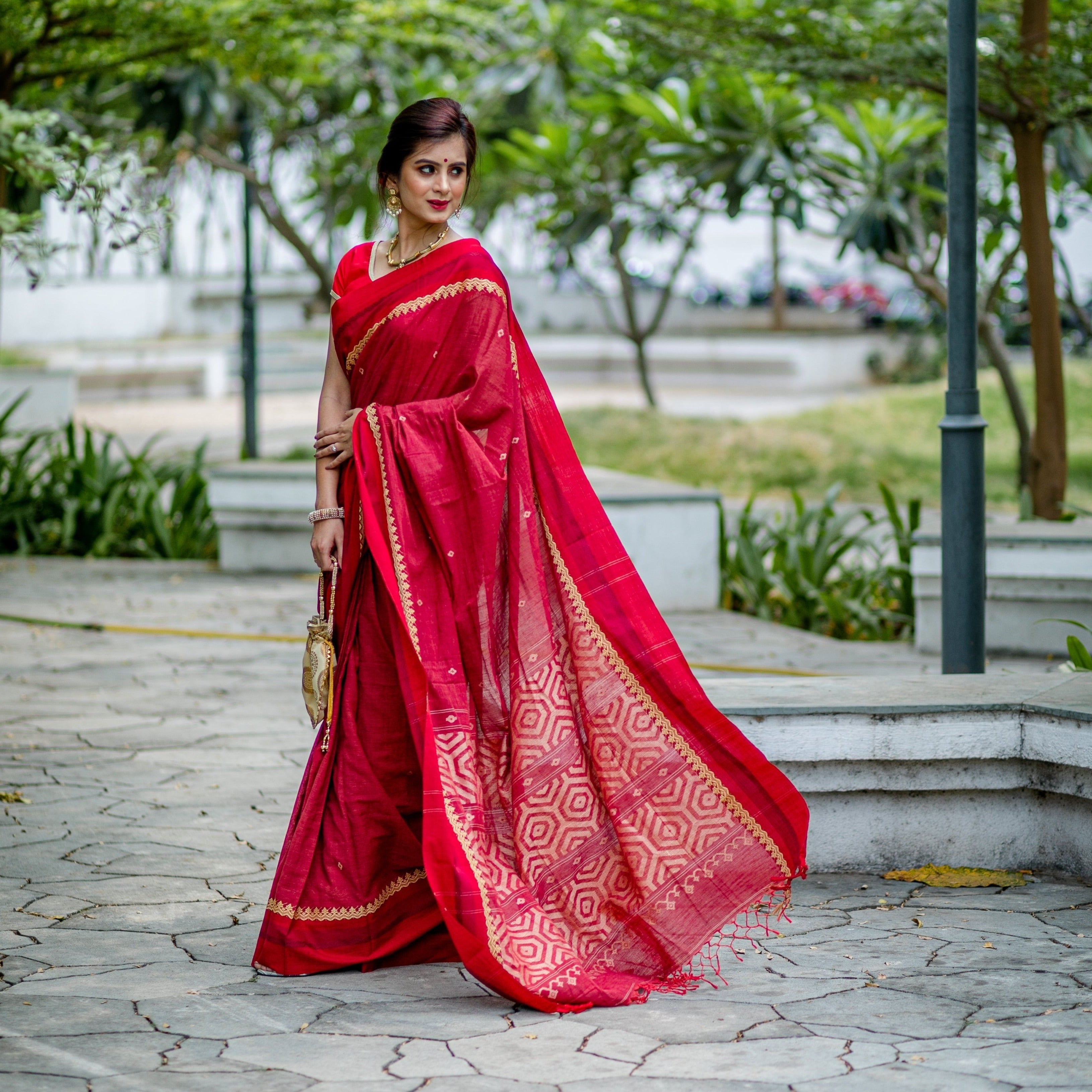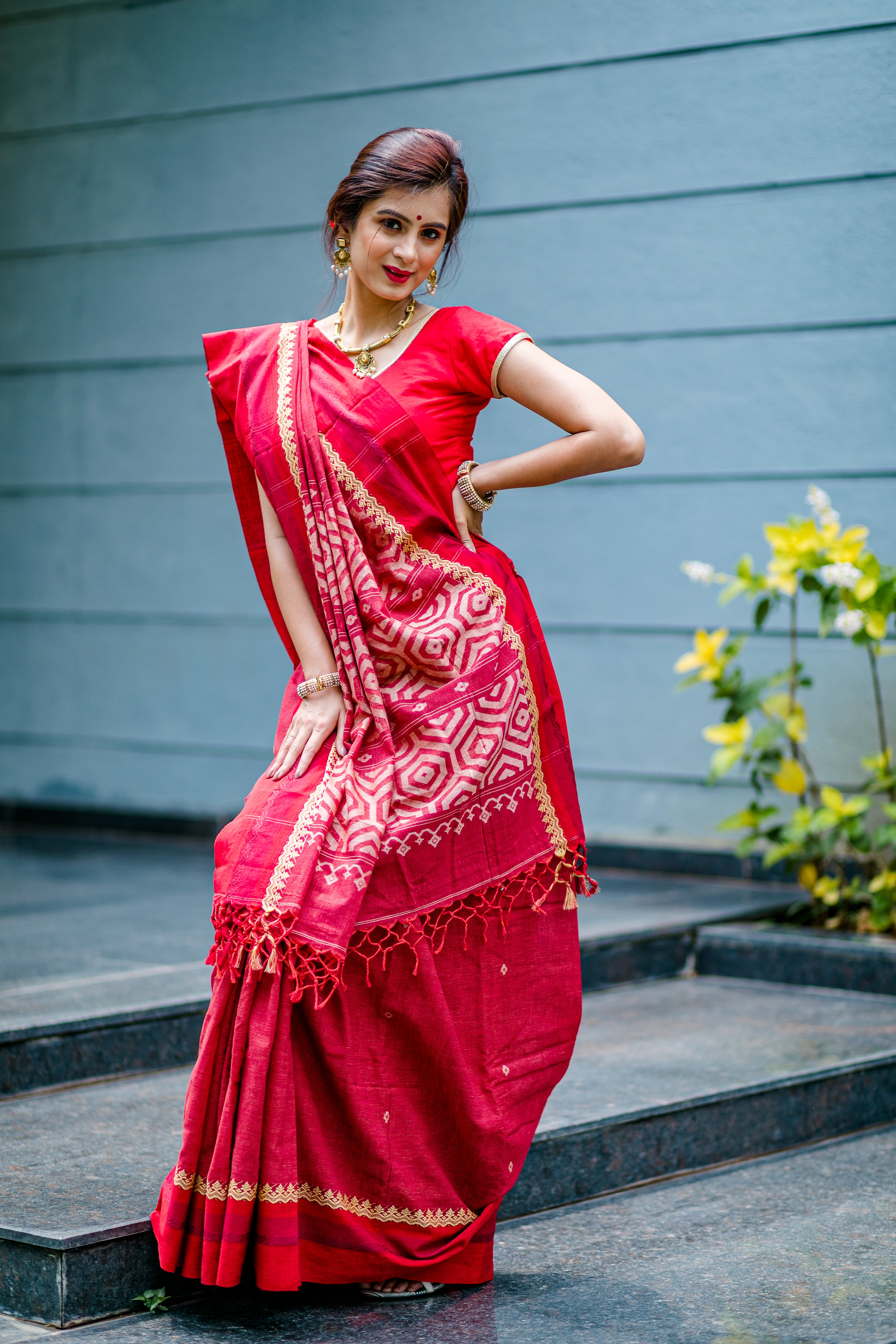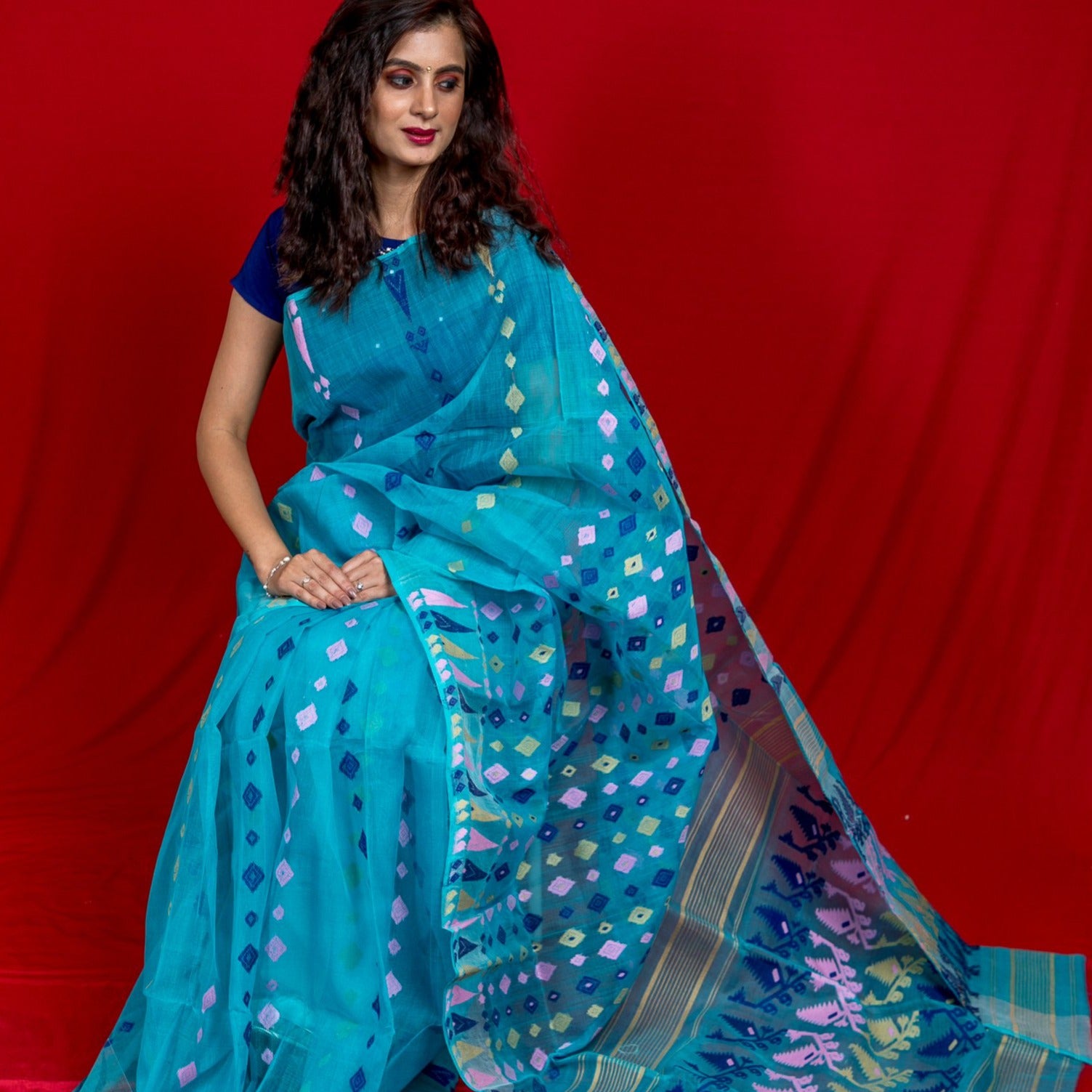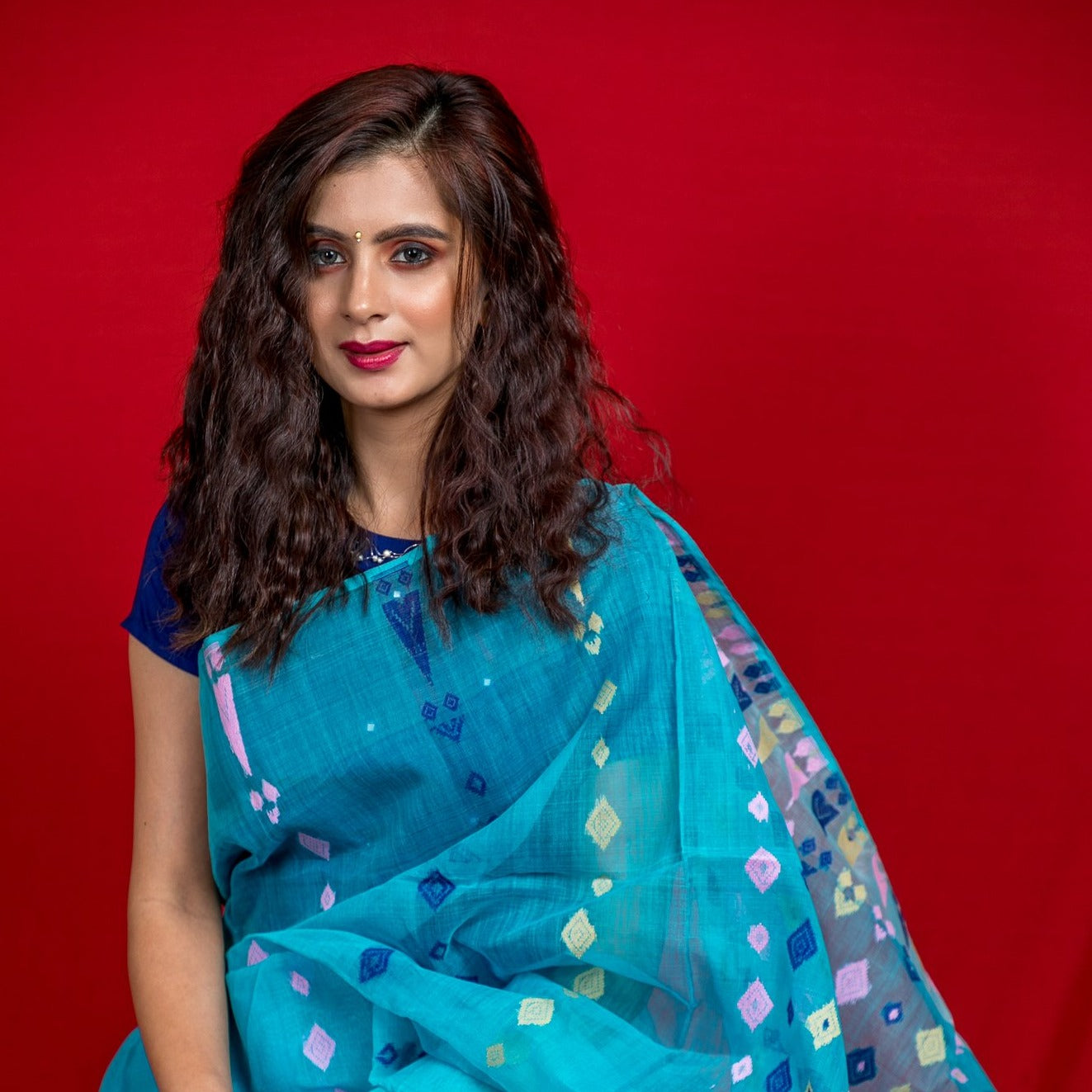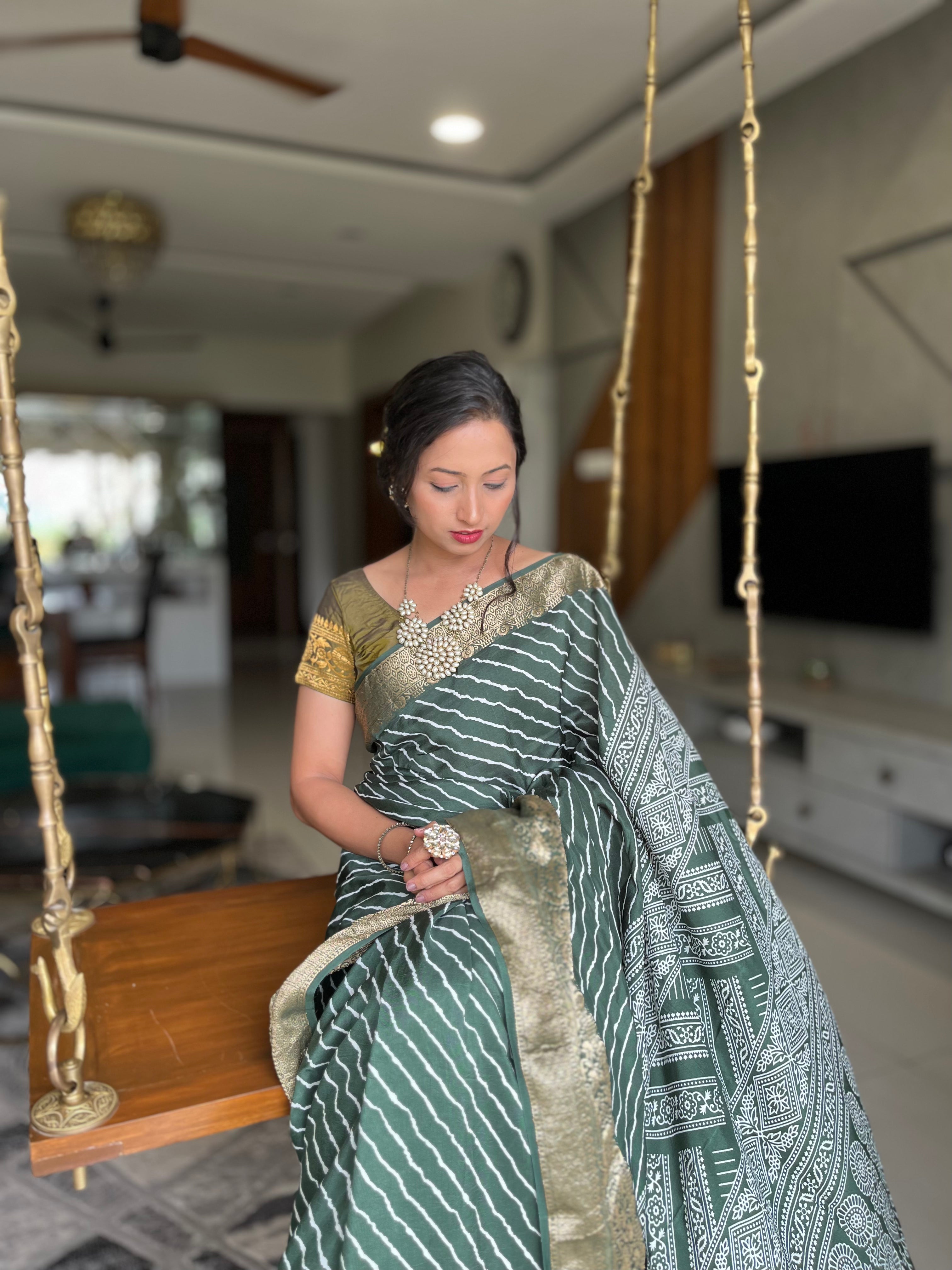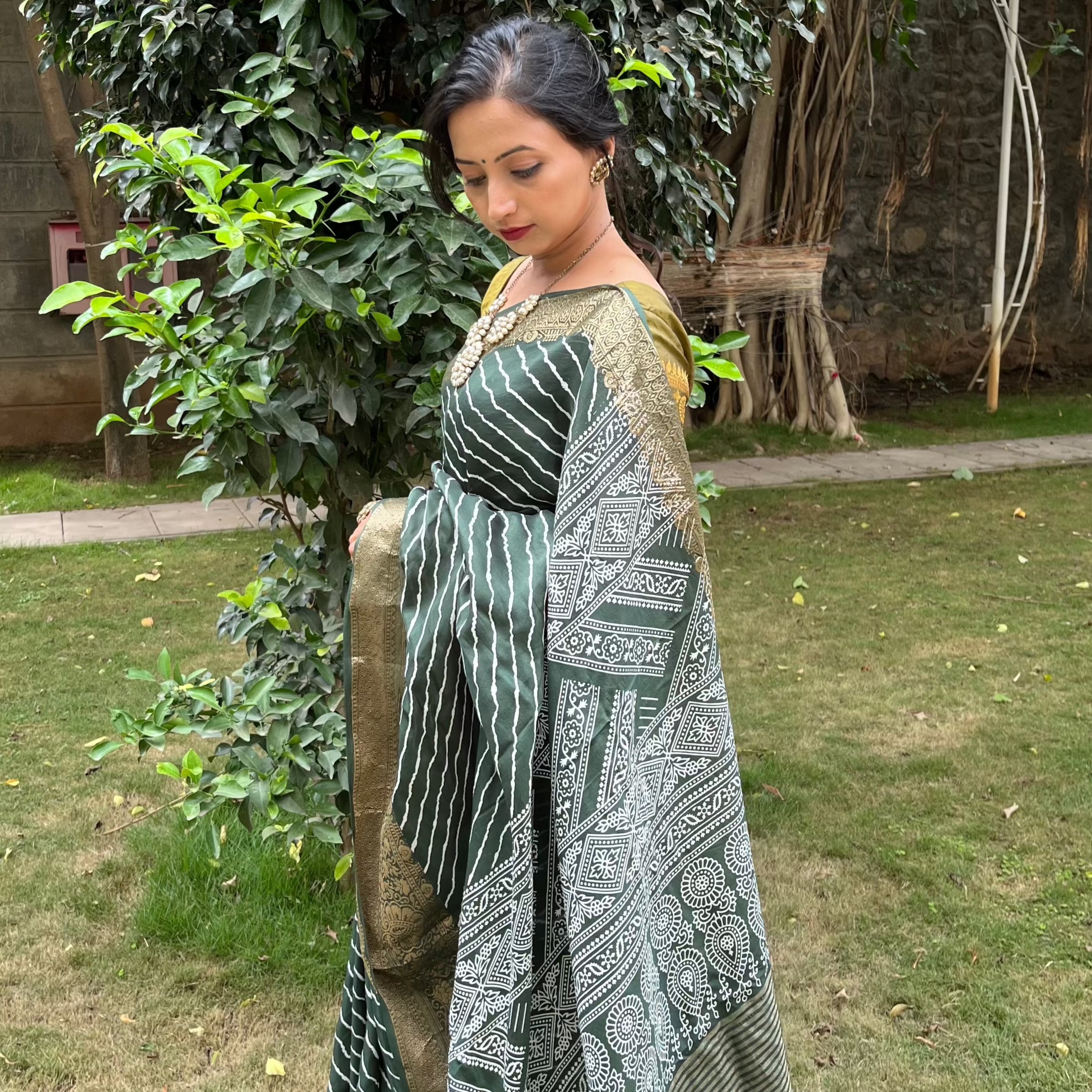Ajrakh is a traditional form of hand block printing on textiles that has a rich history spanning centuries. It originated in the Sindh region (now part of Pakistan) and has been practiced in Kutch, Gujarat, India, for generations. The word "Ajrakh" is derived from the Arabic word 'Azrak', which means blue, indicating the dominant color used historically in these textiles.
The process of creating Ajrakh involves several intricate steps, including pre-treating the fabric, dyeing it in natural colors like indigo, madder red, and black obtained from plants and minerals, and finally, printing the designs using hand-carved wooden blocks. The designs often feature geometric patterns, stars, and floral motifs arranged in intricate symmetry.
Ajrakh textiles are known for their distinctive style and are traditionally worn by various communities in Gujarat and Sindh, including the Meghwal and Kutchi communities. The craftsmanship involved in Ajrakh reflects a deep connection to nature, culture, and heritage. Over the years, Ajrakh has evolved, blending traditional techniques with contemporary designs, making it a symbol of cultural identity and craftsmanship.
In modern times, Ajrakh continues to hold significance both as a traditional craft and as a fashionable textile appreciated worldwide. Several factors contribute to its relevance today:
1. Cultural Preservation: Ajrakh plays a vital role in preserving cultural heritage. Artisans, particularly in Kutch, Gujarat, have worked to maintain traditional techniques and motifs, passing down their skills through generations.

2. Fashion and Design: Contemporary designers have embraced Ajrakh for its intricate patterns and natural dyes, incorporating it into modern fashion. Ajrakh-printed fabrics are used in clothing, accessories, and home decor items, blending tradition with contemporary aesthetics.
3. Sustainability: The use of natural dyes and organic materials in Ajrakh aligns with global trends towards sustainability and eco-consciousness. Consumers appreciate the environmentally friendly aspects of Ajrakh textiles.

4. Artisan Empowerment: Initiatives focusing on fair trade and supporting artisan communities have helped Ajrakh artisans gain recognition and fair compensation for their skills. This has contributed to sustainable livelihoods and economic empowerment.

5. Cultural Exchange: Ajrakh's popularity extends beyond South Asia, with international designers and consumers appreciating its craftsmanship and unique designs. This exposure has led to collaborations and cross-cultural exchanges, further enriching its legacy.
Overall, Ajrakh's adaptation to modern times highlights its enduring appeal, combining tradition with contemporary sensibilities and contributing to its continued relevance in the global marketplace.

